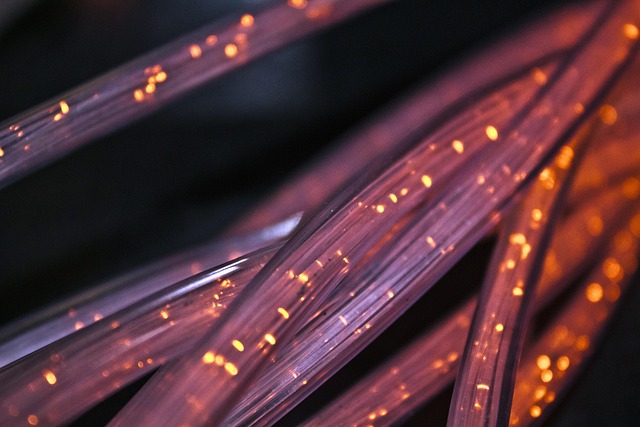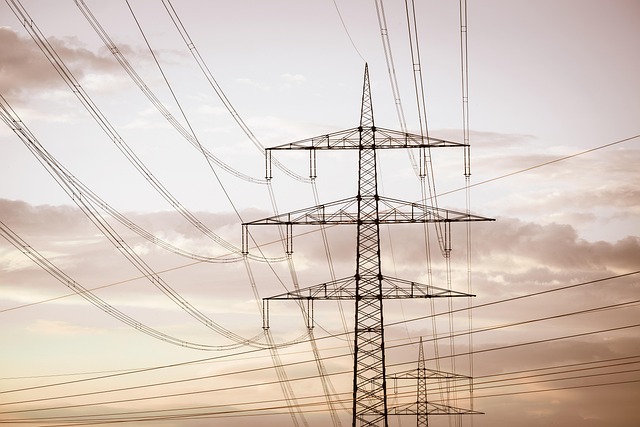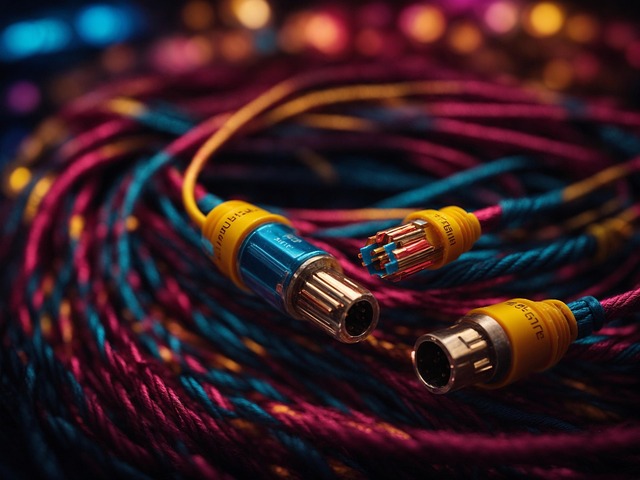Ethernet Standard Voltage Levels Guide 2025
Author: Jameson Richman Expert
Published On: 2025-11-01
Prepared by Jameson Richman and our team of experts with over a decade of experience in cryptocurrency and digital asset analysis. Learn more about us.
Ethernet standard voltage levels determine how network signals are transmitted, how devices are powered over cables (PoE), and how hardware designers meet safety and EMC requirements. This guide explains the voltage behavior across common Ethernet standards (10BASE‑T, 100BASE‑TX, 1000BASE‑T, 10GBASE‑T), Power over Ethernet (PoE) voltage specifications, safe measurement techniques, design implications for magnetics and PHYs, and practical troubleshooting steps for engineers and technicians in 2025.

Why Ethernet voltage levels matter
Understanding ethernet standard voltage levels is essential for multiple reasons:
- Signal integrity: voltage amplitude and common‑mode/differential characteristics determine how well a receiver can recover data over long cables and in noisy environments.
- Safety and compliance: transformers, isolation, and PoE injection must meet regulatory voltage and isolation standards.
- Power delivery: PoE uses DC voltages on twisted pairs. Knowing the allowable voltage ranges and drop vs. cable length matters when designing or deploying powered devices (PDs).
- Troubleshooting: being able to measure and interpret voltages on RJ45 pins helps diagnose link faults, PoE failures, or magnetics problems.
Fundamentals: differential signaling and common‑mode voltage
All modern copper Ethernet variants use balanced differential signaling across twisted pairs and magnetics to reduce electromagnetic interference and improve noise immunity. A few core concepts:
- Differential voltage is the voltage difference between the two conductors in a pair. The receiver senses the difference, which conveys the data signal.
- Common‑mode voltage is the average voltage of the pair relative to a reference (chassis/ground). Good magnetics design and common‑mode chokes suppress unwanted common‑mode currents and reduce emitted noise.
- Transformer coupling is used between the PHY and the cable for DC isolation and common‑mode rejection. The center tap on the transformer is often used for PoE injection.
Because of transformer coupling and PHY output stages, the voltages seen on cable conductors differ from TTL/CMOS levels inside a device. Ethernet line voltages are designed for robust transmission over 100 meters of balanced cable categories (Cat5e, Cat6, etc.).
Ethernet physical layers and typical signaling behavior
Below is a practical overview of commonly deployed copper Ethernet physical layers and how they behave electrically. Exact waveforms and amplitudes are specified in IEEE 802.3/PHY clauses for compliance; the descriptions below give practical, implementer‑level insight.
10BASE‑T (10 Mbps)
- Encoding: Manchester encoding (each bit contains a voltage transition).
- Signaling: Balanced, transformer‑coupled differential signaling.
- Voltage behavior: Transmitters present a differential waveform across the pair. The line‑level differential amplitude is designed to be sufficient to overcome cable attenuation and noise. Because Manchester doubles transitions, energy spectral content differs from later standards.
- Application note: 10BASE‑T is resilient at short installations but is rarely used alone in modern networks; many PHYs implement auto‑negotiation that selects higher speeds if supported.
100BASE‑TX (Fast Ethernet)
- Encoding: MLT‑3 line code with 4B5B block coding in fiber‑based relatives; on copper, signaling is sent across two pairs via transformer coupling.
- Voltage behavior: The transmitter uses controlled differential voltage swings shaped by line drivers and magnetics. The MLT‑3 amplitude and transitions reduce the signal bandwidth, which helps with cable characteristics.
- Design note: Proper magnetics and cable category (Cat5 minimum) are needed to preserve signal amplitude across 100 m.
1000BASE‑T (Gigabit Ethernet)
- Encoding: Uses four pairs simultaneously, PAM‑5 (five-level pulse amplitude modulation) with echo cancellation and sophisticated DSP in the PHY.
- Voltage behavior: Each pair carries symbol levels mapped to multiple amplitude states (PAM‑5). The PHY’s analog front end transmits relatively small voltage steps with high precision; the DSP recovers these multi‑level signals despite near‑end echo and crosstalk.
- Note: Designers must pay attention to common‑mode suppression, crosstalk (NEXT/ FEXT), and magnetics to preserve these delicate multi‑level waveforms.
10GBASE‑T (10 Gigabit Ethernet over copper)
- Encoding: Multi‑level PAM with complex DSP and stronger forward error correction to combat higher bandwidth demands.
- Voltage behavior: Signaling amplitudes are carefully controlled, with emphasis on linearity and timing. Cable quality and termination become increasingly important.
- Application note: 10GBASE‑T is sensitive to connector and cable quality; voltage and timing margins are tighter than for lower speeds.
For fiber Ethernet (100BASE‑FX, 1000BASE‑LX, etc.), signals are optical — no electrical voltages on the cable — but the transceiver front end still uses electrical voltages inside the module and for link negotiation.

Power over Ethernet (PoE): the DC voltage story
Power over Ethernet injects DC onto the cable pairs so powered devices such as IP cameras, VOIP phones, and wireless access points can receive power and data on the same cable. PoE uses a higher DC voltage than typical logic rails to minimize I2R losses over cable length.
PoE standards and typical voltages
- IEEE 802.3af (PoE) — introduced nominal 48 V DC to deliver up to 15.4 W at the PSE (Power Sourcing Equipment). The PD (powered device) receives less due to cable loss.
- IEEE 802.3at (PoE+) — the PoE+ standard raises available power to 25.5 W at the PD (approx. 30 W at the PSE), still using a nominal 48 V DC distribution.
- IEEE 802.3bt (PoE++ / PoE Type 3 & 4) — provides higher power (up to about 60 W for Type 3 and up to 100 W for Type 4) using multiple pairs and similar nominal voltages (around 48 V) with enhanced power classification and detection methods.
In short: PoE standards use a nominal DC voltage around 48 V on the cable pairs. That voltage is chosen to reduce current for a given power to keep cable losses and heating manageable while staying under hazardous voltage thresholds in most deployments.
How PoE is injected and detected
- PoE injects DC onto the center taps of the transformer magnetics (alternative A) or on spare pairs (alternative B). The cable carries both the AC differential data and the DC power simultaneously because the data is transformer‑coupled while DC is applied to the center taps.
- Before applying full power, the PSE detects a valid PD by applying a low‑voltage signature and measuring the signature resistance (or resistance + classification signature). This prevents accidental powering of non‑PoE devices.
- After classification and handshake, the PSE raises voltage to the operational nominal (around 48 V) and monitors current to manage power budgets.
Isolation, safety, and regulatory voltage requirements
Ethernet ports must satisfy isolation and safety standards. Key points:
- Transformer isolation ensures galvanic isolation between the cable and the host electronics, protecting users from hazardous voltages and helping meet EMC and safety standards.
- Isolation rating — the magnetics and isolation barriers are designed to meet regulatory requirements (for example, typical transformer isolation test voltages might be in the kilovolt range for conformity testing). Designers should consult the relevant versions of IEEE 802.3, IEC 60950 / IEC 62368, and local regulations for exact ratings.
- ESD immunity and surge protection — common‑mode chokes, gas discharge tubes, or TVS diodes are often used to protect ports from electrostatic discharge and lightning surges; these components must be specified to tolerate expected transients without affecting normal signal voltages.
How to safely measure Ethernet voltages
Because Ethernet pairs are transformer‑coupled and may carry PoE DC voltages, follow safe measurement practices:
- Use the right tool: To view AC differential waveforms, use an oscilloscope with a true differential probe or an isolated scope. Never connect a grounded scope probe directly to one side of an unisolated cable — you can short the transformer and damage the equipment or scope.
- For DC checks (PoE): Use a multimeter across the RJ45 pins corresponding to the powered pairs or a PoE tester that safely breaks out the pair. Many PoE testers will show voltage, power class, and whether power is negotiated correctly.
- Disconnect before probing: When using clamp meters or other inline tools, ensure you're not creating ground loops or bypassing isolation.
- Use breakout adapters: RJ45 breakout dongles or patch‑panel test jacks provide a safe way to access conductors without exposing splices.
- Be aware of classification states: A PSE may apply detection voltages (low voltage signature) that differ from operational PoE voltages — interpreting these correctly avoids false conclusions when troubleshooting.

Design considerations for implementers and hardware engineers
When designing Ethernet interfaces and PoE products, keep these practical design rules in mind:
- Follow the PHY vendor reference design. PHY ICs have specific magnetics, termination networks, and common‑mode choke requirements to ensure correct differential amplitude, eye shape, and EMC behavior.
- Select certified magnetics. Magnetics modules (with proper center‑tap connections) are tested for insertion loss, return loss, and isolation. They also simplify PoE designs by providing the center tap required for DC injection.
- Plan for cable loss and heating. If a device draws close to the upper power class, consider the effect of cable length and gauge on delivered power and the thermal design of PD electronics.
- Manage emissions. Proper layout (short loops, controlled impedance traces), shielding, and component selection reduce common‑mode emissions that arise from imperfect balance or high common‑mode voltages.
- Implement robust PoE PD front ends. PDs should handle inrush, negotiate classification properly, and have input protections (fuses, hot‑swap MOSFETs, current limiting) to survive fault conditions.
- Test to standards. Validate designs with compliance testing (IEEE 802.3 conformance, EMC/EMI tests, and safety tests) using accredited labs.
Common troubleshooting scenarios and voltage‑related symptoms
Many real‑world Ethernet problems manifest as voltage or power issues. Below are common scenarios with probable causes and fixes.
No link, but LED indicates activity
Possible causes:
- Bad magnetics or improperly soldered RJ45; the PHY’s line driver is present but the transformer isn't coupling correctly.
- Broken pair continuity or severe imbalance causing the receiver to fail to recover differential signal despite transmitter activity on the PHY.
- Check pair continuity with a cable tester.
- Measure differential amplitude with a differential probe to see if the transmitter is producing appropriate swings.
PoE shows voltage on PSE but PD not powering
Possible causes and checks:
- PD failed classification or the PD draws too much inrush and PSE shut down — check PoE tester output and PSE logs.
- Wrong wiring (using only spare pairs when the PD expects data‑pair feed or vice versa). Verify alternative A vs B wiring.
- Fuse or input MOSFET on PD blown or cold‑solder joint — inspect PD power entry components.
Intermittent link at higher speeds
Voltage or signal‑level related reasons:
- Attenuation and crosstalk produce insufficient amplitude margin at the receiver for 1G/10G modes. Ensure cable category meets requirements and connectors are properly made.
- High common‑mode noise or EMI causing errors; verify common‑mode choke and grounding strategy.
Real‑world measurement examples and what they mean
Below are illustrative examples engineers commonly observe in lab measurements. These values are for conceptual understanding; exact values differ by PHY vendor and cable conditions.
- Idle pair with no link: small common‑mode offset relative to chassis (typically tens to hundreds of millivolts after transformer depending on termination).
- Active 100BASE‑TX signal: shaped differential waveform with amplitude sufficient for the PHY receiver; eye openings should be large enough to pass BER tests.
- 1000BASE‑T during training: multi–level PAM waveforms on each pair; sophisticated DSP equalizes and cancels echoes. Measured peak‑to‑peak swings are modest compared to single‑ended logic levels, emphasizing precision over sheer amplitude.
- PoE enabled: DC measured across the PD pins shows roughly nominal 48 V (subject to cable drop). A PoE tester will indicate class and available watts.
Always consult the specific PHY datasheet and the magnetics module spec sheet for precise expected voltage values and test points for your design.

Regulatory and standards references (high‑authority)
When designing, testing, or troubleshooting Ethernet voltage and PoE systems, consult authoritative standards and documentation:
- IEEE 802.3 – the core standard defining Ethernet physical layers and PoE behavior (see the IEEE 802.3 overview on Wikipedia for a summary): IEEE 802.3 (Wikipedia).
- Ethernet general background: Ethernet (Wikipedia).
- Power over Ethernet: overview and historical context: Power over Ethernet (Wikipedia).
- Wiring standards and cable categories: TIA‑568 (Wikipedia).
Actionable checklist: verify voltage and PoE health on a network
- Confirm cable category and length for required PHY rate (Cat5e for 1G, Cat6/Cat6a for 10G depending on length).
- Use a PoE tester to check the presence of nominal ~48 V and classification. If unavailable, measure DC across suspected powered pins using a meter on a breakout adapter.
- To debug data signals, use a differential oscilloscope probe with isolation. Capture signal eye diagrams or constellation diagrams (for multi‑level schemes) if available.
- Inspect magnetics and RJ45 terminations for proper soldering, center‑tap connections, and correct wiring (TIA‑568A/B consistency).
- Check PSE logs or switch telemetry for fault conditions, overcurrent events, or classification failures.
- If heating or voltage drop is present, evaluate cable gauge and route; consider reducing PD power consumption or choosing a closer PSE.
Further reading, tools, and vendor resources
To deepen your understanding or cross‑reference details, consult datasheets and vendor application notes (PHY vendors like Microchip, Broadcom, Marvell, Realtek provide extensive application notes). Additionally, the following curated resources and tools are useful:
- Official standards (purchase/consult the relevant IEEE 802.3 clauses for exact voltage and signaling waveform specifications).
- Open resources and primers (for background): Ethernet and PoE Wikipedia pages linked above.
- Network testing hardware: PoE testers, cable certifiers, and differential oscilloscope probes.

Practical example: designing a small PoE PD (powered IP camera)
Key steps and voltage‑centric considerations:
- Select a PD front‑end controller that supports the relevant PoE spec (802.3af/at/bt) and has good inrush control.
- Use magnetics with the correct center tap and isolation rating; follow the PHY vendor recommended center‑tap resistor/capacitor network to manage common‑mode behavior.
- Design power conversion (DC‑DC) to accept ~48 V nominal input and regulate to device rails (12 V, 5 V, 3.3 V), allowing for worst‑case cable voltage drop.
- Provide thermal headroom — measure PD module temperature while powered at full load on long cables to ensure reliability.
- Test with various PSEs and PoE injectors to ensure interoperability and correct classification.
Frequently asked questions (FAQs)
Q: What is the typical voltage on Ethernet cable pairs when PoE is not used?
A: Without PoE, the cable carries AC differential signaling only; you’ll see differential waveforms when the link is active. There is no DC supply voltage present on the pairs (except for small biasing inside the transmitter/receiver). For safe waveform observation, use a differential probe or an isolated oscilloscope.
Q: What voltage does PoE use?
A: PoE standards use a nominal DC voltage near 48 V on cable pairs. The IEEE 802.3 family of standards (af/at/bt) defines detection, classification, and operational behavior for providing power over balanced twisted pair Ethernet while minimizing risk to legacy devices.
Q: Can I measure Ethernet signals with a normal scope probe?
A: No — avoid using a single‑ended grounded probe directly on cable conductors. Use a differential probe or an isolated oscilloscope to prevent short circuits through the scope ground and to protect both the equipment and yourself.
Q: Do fiber links have voltage levels I need to worry about?
A: Fiber cables carry optical signals, so there are no electrical voltages on the cable itself. However, the transceiver modules (SFP/GBIC) have internal electrical interfaces (and some SFP modules support PoE on the host side), so standard electrical safety and module specifications apply.
Conclusion
Ethernet standard voltage levels encompass both the AC differential signaling used for data and the DC voltages used by Power over Ethernet. While PHYs and magnetics manage the precise amplitudes and shapes of data waveforms, PoE introduces a nominal ~48 V DC distribution that enables a broad range of powered devices. For designers and technicians, the right combination of safe measurement practices, adherence to IEEE/TIA/IEC standards, and proper magnetics/layout ensures robust link performance and safe PoE operation.
If you need to dig deeper into the standards or practical test equipment recommendations, consult the IEEE 802.3 documentation and PHY vendor application notes. For general background on Ethernet and PoE, the Wikipedia entries provide concise overviews: Ethernet (https://en.wikipedia.org/wiki/Ethernet) and Power over Ethernet (https://en.wikipedia.org/wiki/Power_over_Ethernet).

Related resources and additional links
Technical and contextual resources (including some suggested industry/market reading):
- Ethernet on Wikipedia — overview and history.
- Power over Ethernet on Wikipedia — PoE standards and operation.
- IEEE 802.3 summary — reference to Ethernet standards.
- For industry market and trading insight (unrelated to Ethernet but referenced for readers interested in adjacent market topics): Bitcoin price prediction by 2050 — long‑term outlook.
- Developer and API pricing discussion useful for trading automation readers: TradingView API pricing and GitHub guide.
- Automation and AI trading insights (for readers exploring automation in other domains): Crypto AI trading bot review 2025.
- Signal services and strategy resources: Best crypto trading signals and tools.
If you trade crypto — quick registration links
For readers who also want to explore cryptocurrency exchanges (these are optional referral links):
- Binance registration: Register at Binance
- MEXC registration: Register at MEXC
- Bitget registration: Register at Bitget
- Bybit registration: Register at Bybit
Note: The cryptocurrency links are provided for convenience and are not endorsements. Focus on the Ethernet technical guidance above for designing and troubleshooting network voltage and PoE issues.